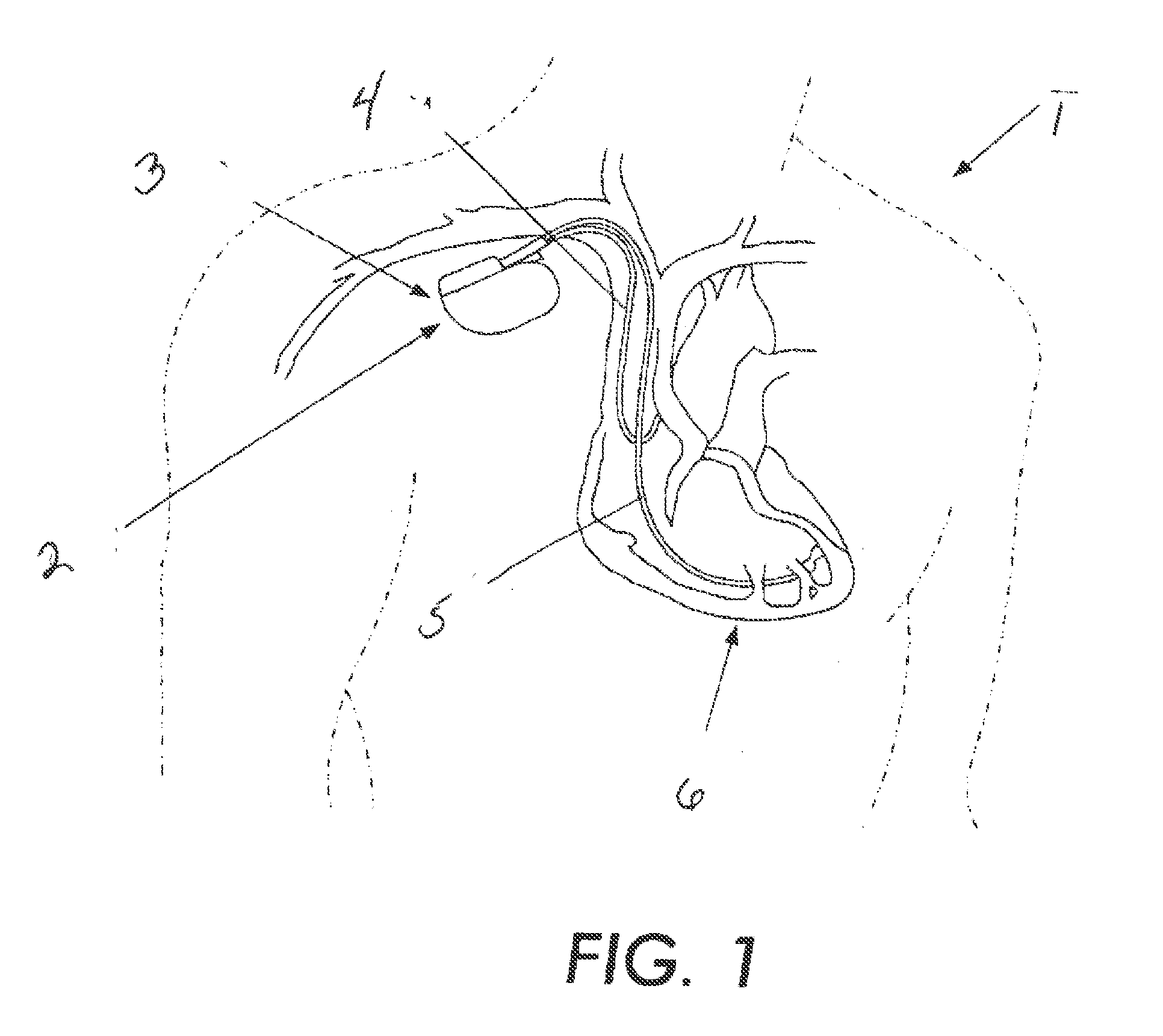Mri-safe defibrillator electrodes
a defibrillator and electrode technology, applied in the field of defibrillator electrodes, can solve the problems that the requirements of defibrillator systems create unique challenges, and achieve the effect of reducing patient risks and reducing patient risks
- Summary
- Abstract
- Description
- Claims
- Application Information
AI Technical Summary
Benefits of technology
Problems solved by technology
Method used
Image
Examples
Embodiment Construction
[0012]FIG. 1 illustrates a patient 1 having a cardioverter defibrillator 2 implanted in the right shoulder area 3. A lead 4 is shown extending into the right atria of the patients heart 6, while another lead 5 is shown extending into the right ventricle of the heart 6. The ventricular lead 5 comprises a pacing / defibrillation lead capable of pacing the heart 6 in the event an intrinsic heart beat is not detected. The lead 5 can also deliver a defibrillation pulse (shock) to the patient in the event that the defibrillator 2 determines that a life threatening arrhythmia is detected.
[0013]FIG. 2 shows a preferred embodiment of the tip of the defibrillator lead 15 that uses a self-healing dielectric material, such as disclosed in published US Patent Application, publication number 2006-0271138A1, entitled Electromagnetic Interference Immune Pacing / Defibrillation Lead. Published US Patent Application, publication number 2006-0271138A1, describes various means to employ self-healing dielec...
PUM
 Login to View More
Login to View More Abstract
Description
Claims
Application Information
 Login to View More
Login to View More - R&D
- Intellectual Property
- Life Sciences
- Materials
- Tech Scout
- Unparalleled Data Quality
- Higher Quality Content
- 60% Fewer Hallucinations
Browse by: Latest US Patents, China's latest patents, Technical Efficacy Thesaurus, Application Domain, Technology Topic, Popular Technical Reports.
© 2025 PatSnap. All rights reserved.Legal|Privacy policy|Modern Slavery Act Transparency Statement|Sitemap|About US| Contact US: help@patsnap.com



